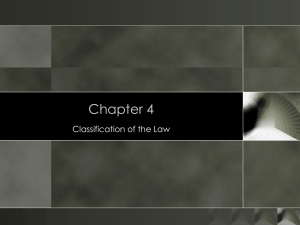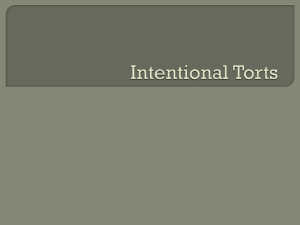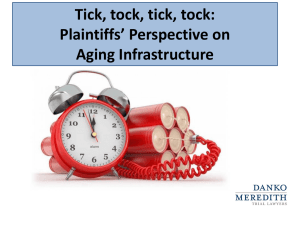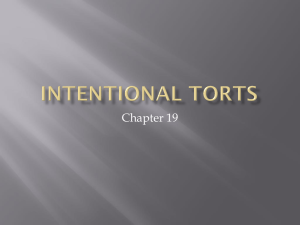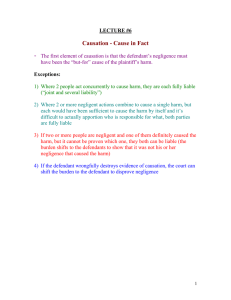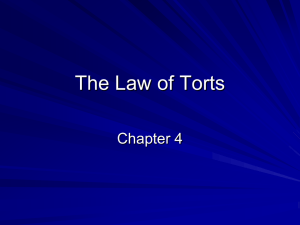Environmental law
advertisement
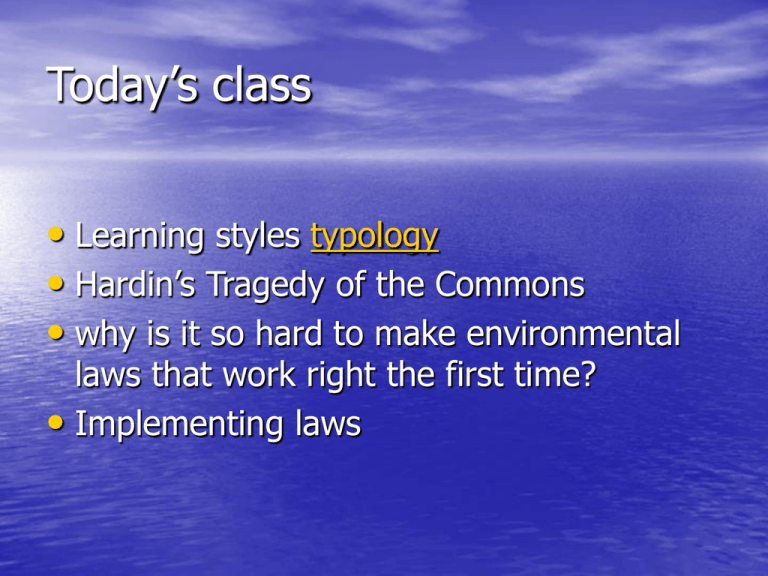
Today’s class • Learning styles typology • Hardin’s Tragedy of the Commons • why is it so hard to make environmental laws that work right the first time? • Implementing laws What is the tragedy of the commons? • List a range of possible solutions. • Identify problems or limitations for each one. Implementing environmental laws Why environmental laws go awry: A framework of policy implementation What is implementation? • Making the law or program work • neither straightforward or guaranteed • depends upon a number of factors Example • Identify how many ways you could get from campus to downtown Green Bay • How about from here to Madison? To Washington D.C? • Implementation challenges expand as policies become more complex implementation framework • Extrinsic and intrinsic variables Questions for discussion Why is implementation difficult? Why does each law tell a different story? What is the role of states in implementing environmental laws? What factors of the implementation framework seem most important? Why? Federal-state working relationships • affect implementation • may be both positive or negative • can be described as a function of mutual trust and involvement Environmental federalism • state environmental laws were preempted by national law • “partial preemption”: states may assume primacy, but federal agency can reassume programmatic responsibility • Carrot: federal funding • Stick: federal oversight Exercise • using the working relationship typology, decide which quadrant represents the best fit in the organization where you work or know about • Do you agree that trust and involvement are central to effective working relationships? Why or why not? Old relationship paradigm • relying on agency outputs, closer oversight, in a partial-preemption federalstate arrangement 1990s: Context for a new paradigm • Growing concern about unfunded or underfunded mandates • Increasing capacity of state agencies • National Performance Review and “reinventing government” • Govt. Performance and Results Act New paradigm (1995--) • National Environmental Performance Partnership System – new flexibility for states (PPA) – more control over funding (PPG) – focus on OUTCOMES (Core performance measures) Working relationship model revisited Are working relationships “never better” or are they never better? NEPPS is difficult to put into practice, illustration of complexity of environmental law and implementation Common law and the environment – exposure to environmental conditions that may harm persons or property • “toxic torts”: persons who suffered harm as a result of exposure to toxic substance – substances that by inhalation, ingestion, dermal exposure cause physical injury or disease • three types of torts used for environmental injuries – nuisance, trespass, negligence What can the court do? – compensatory damages: $ to compensate for actual harm – general damages: $ for injuries for which an exact amount is not known (pain and suffering) – punitive damages: $ designed to punish reprehensible behavior – injunction: court prohibits conduct (interlocutory or permanent) – may use one or more remedies Private Nuisance – use of property that interferes with your neighbor’s use and enjoyment of her property – defenses include • failure to demonstrate causation • failure to demonstrate injury • balancing of the equities: – coming to the nuisance Public nuisance – unreasonable interference with a right common to the general public – significant interference with the public health, safety or comfort – defenses include • failure to show causation • failure to demonstrate harm • balancing of the equities Trespass • interference with the possession of property (chattels or land) – must prove: invasion; ownership; disturbance in the property – need not demonstrate physical harm – need not prove wrongful motive – need not be a person Negligence • failing to do something that a reasonable person, guided by ordinary considerations, would do – defendant under a duty to conform to a standard of conduct – defendant breached that duty – “proximate cause” : injury would not have occurred but for that action – plaintiff suffered loss Negligence per se • violation of an environmental law, which is the proximate cause of the injury, may be seen as negligence “per se” and therefore render the defendant liable in a civil action Strict liability – assessment of liability for damages without a showing of negligence – person engaged in ultrahazardous activity is liable for any harm that results, regardless of the care exercised to prevent that harm Exercises • Sue Jones stores gasoline in a 55 gallon drum in her • • yard. A prankster throws a lit match into the drum. The explosion damages the neighbor’s garage. Cause(s) of action? Does Sue have any defense? Michael Jackson comes into your yard and starts singing. What can you do? Paula Jones, after winning a big lawsuit, buys a condo near the airport. She brings a nuisance action, arguing that the airplanes make too much noise. What are her chances? Tuesday: three cases Come prepared to answer the questions in the syllabus Why not rely on common law? • identify some major shortcomings of common law


